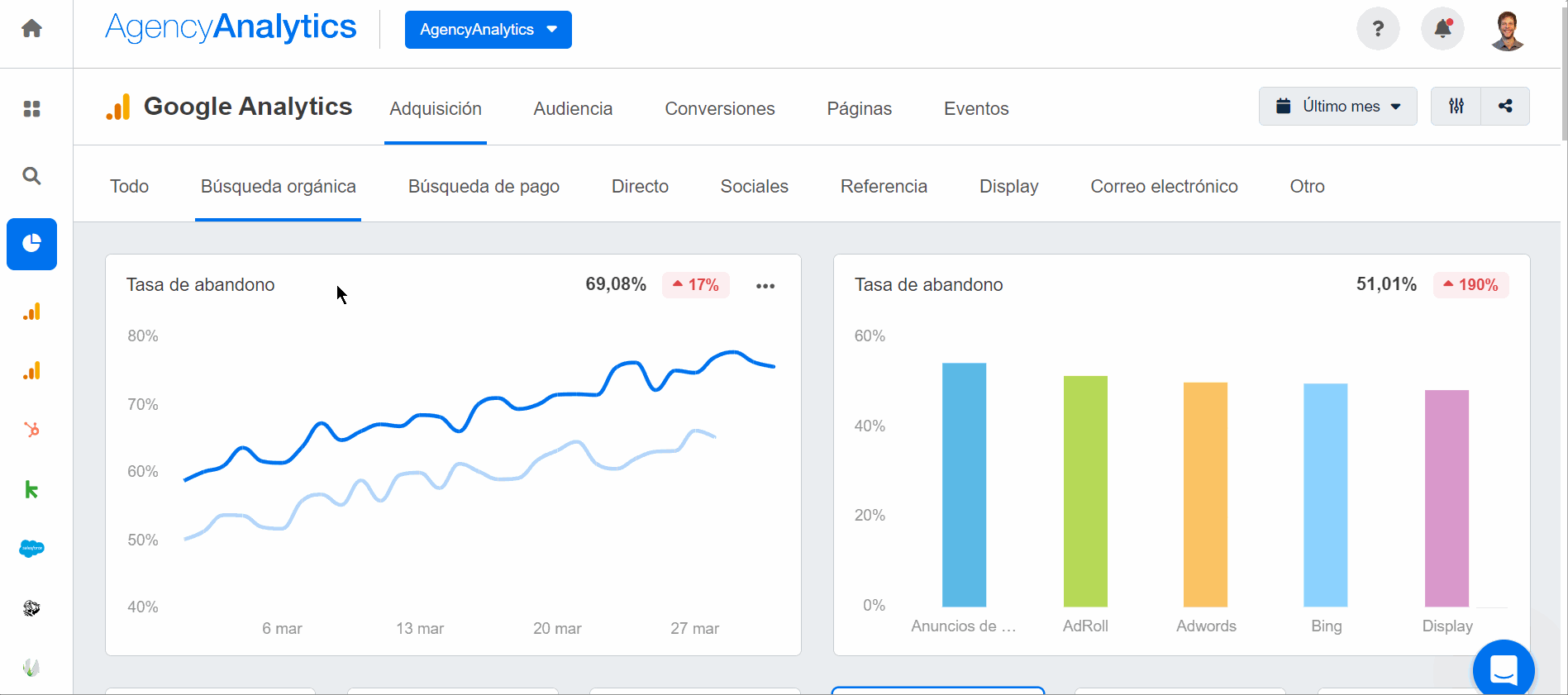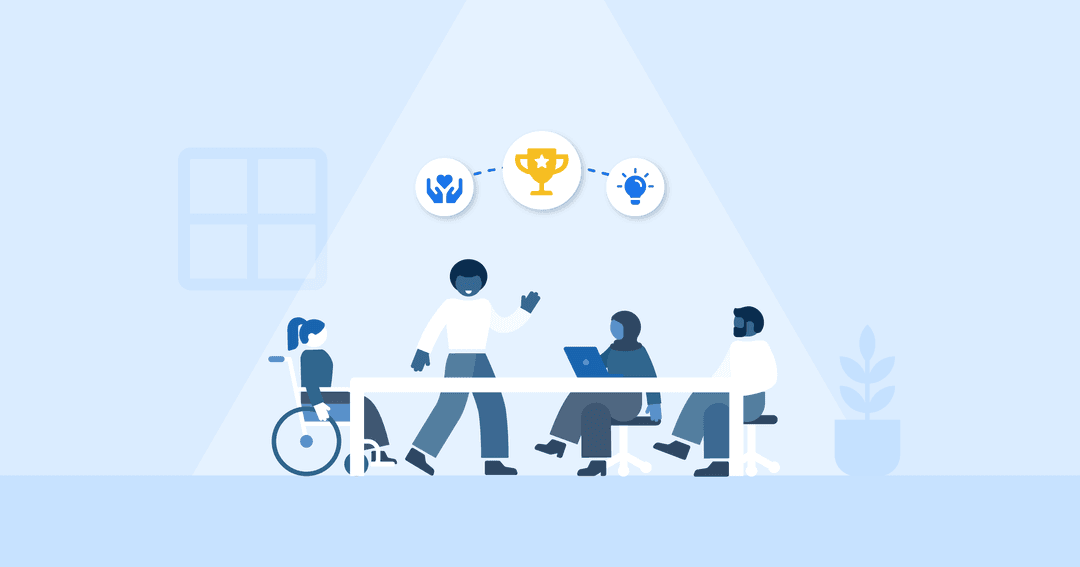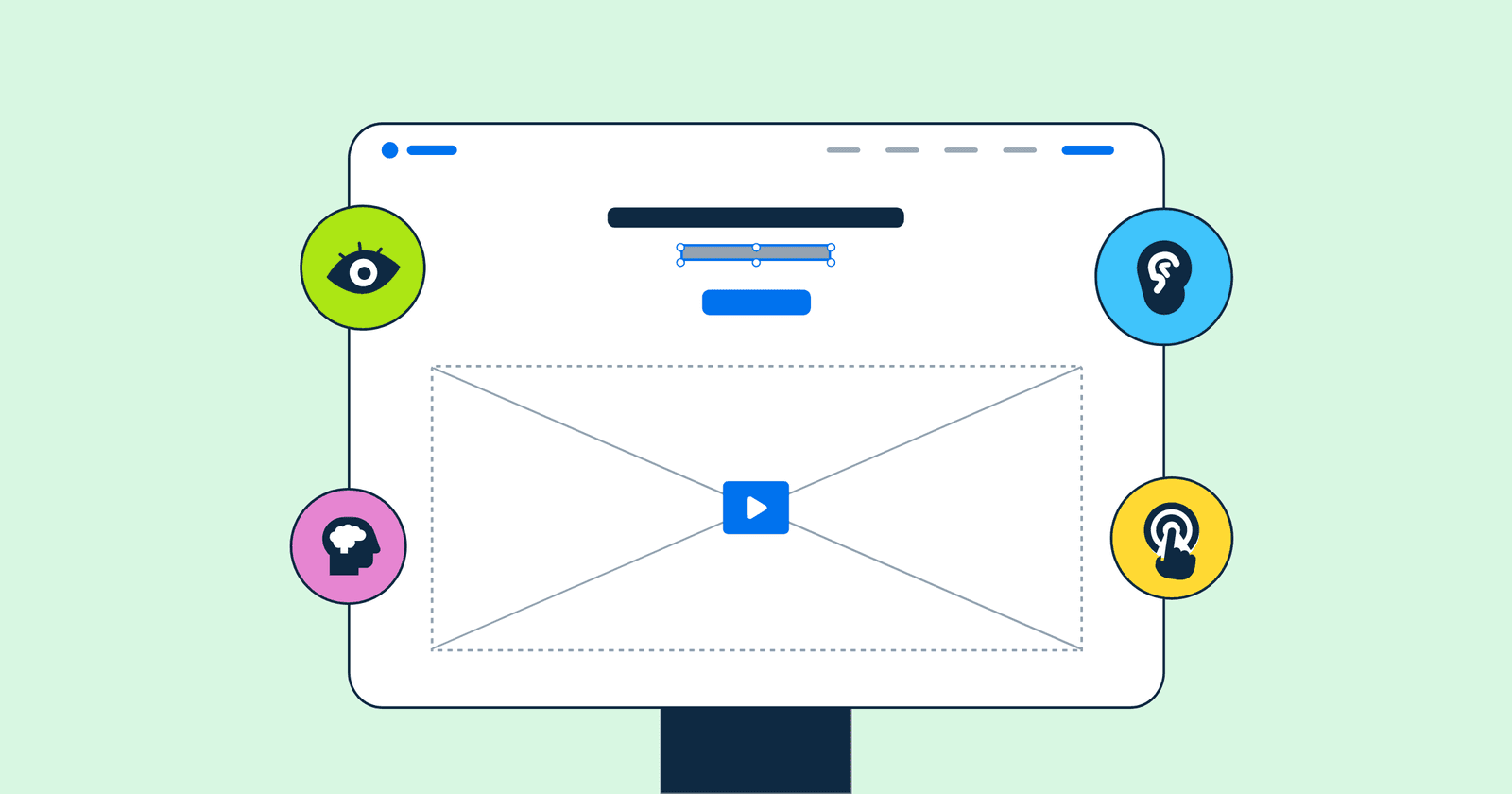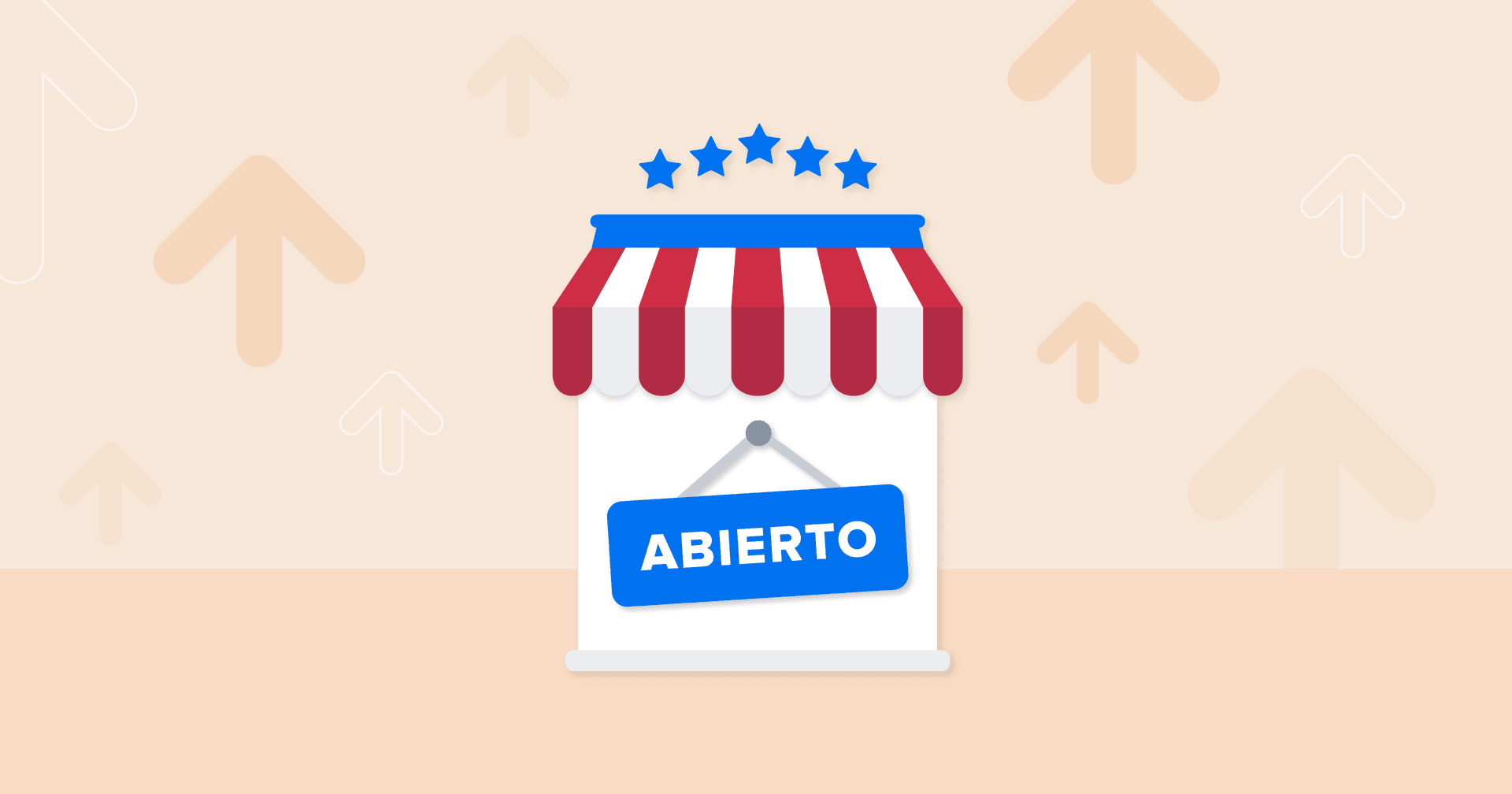Table of Contents
Table of Contents
- What’s the Meaning of Diversity and Inclusion?
- What Are the Types of Diversity in the Workplace?
- The Benefits of Having a Diverse Agency Team
- The Challenges of Implementing Diversity Initiatives at an Agency
- How To Promote Diversity and Inclusion in Your Agency
- A Diverse Workplace Is a Key Component of Agency Success
7,000+ agencies have ditched manual reports. You can too.
Free 14-Day TrialQUICK SUMMARY:
Marketing agency workplace diversity taps into varied backgrounds for enhanced creativity and success while representing the ethical stance of not discriminating against races, abilities, and other characteristics. This article highlights the dual benefits of workplace diversity: fostering a multi-talented team that propels creativity and business opportunities and upholding the moral imperative of inclusivity.
We often hear about diversity in the workplace. But why does it matter for agencies?
Here’s a real-life scenario: Say your agency takes on a new client with operations in Western Europe, but you’ve never worked on accounts outside the US. Employees with local knowledge help you navigate this uncharted territory, pointing out any cultural nuances and sharing insider insights.
Similarly, your multilingual employee will seamlessly switch dialects with that new prospect you’ve been eyeing but couldn’t quite hit it off with. And what about that client with the upcoming Pride Month campaign? Your employee who fiercely advocates for the LGBTQ+ community knows exactly how to infuse language that celebrates different groups.
Your clients’ audiences are made up of different people with different realities. To continuously thrive and deliver fresh ideas to the market, agencies benefit from hiring a diverse team–in more ways than one.
Embracing diversity in your agency creates a work environment that welcomes people from different walks of life. It’s a way to demonstrate your values, celebrate uniqueness, and develop a positive reputation.
In this article, we’ll explore why embracing diversity is a key to agency success, along with practical ways to implement policies and overcome challenges.
What’s the Meaning of Diversity and Inclusion?
Diversity and inclusion are often used in the same breath. So, what’s the difference exactly?
Here’s a breakdown:
Diversity in the workplace means having a mix of backgrounds, experiences, and perspectives on your teams.
This includes (but is not limited to) differences in:
Culture
Ethnicity
Sexual orientation
Race
Religion
Socioeconomic status
Physical ability
On the other hand:
Inclusion is what happens once the diverse workforce is hired–it means cultivating a workplace atmosphere where all employees feel equally valued. When diverse individuals feel supported and have access to equal development opportunities, that’s inclusion.
Creating a diverse workforce is just the beginning. Its full benefit is only materialized when every employee is treated in a fair, equitable manner.
What Are the Types of Diversity in the Workplace?
There’s “diversity” in diversity, meaning there are varying subsets to consider–let’s delve deeper.
Internal Diversity
Internal diversity refers to core, innate traits with some level of permanency. This includes defining factors like:
Race
Age
Ethnicity
Assigned gender
Sexual orientation
National origin
Physical ability
While many of these characteristics are fixed (e.g., age), others may change over time (e.g., gender identity, physical ability).
External Diversity
External diversity refers to the influence of outside factors on an employee’s personality and general outlook. These are more subject to change than internal diversity factors (though it depends on individual circumstances).
Here are a few examples:
Socioeconomic status
Marital status
Parental status
Immigration status
Academic background
Area of residence
Life experiences
Organizational Diversity
As the term implies, organizational diversity refers to differences in skills and hierarchical positions within your agency’s structure.
Here are a few agency-specific variations:
Skillset (e.g., Graphic Design vs. Media Buying)
Seniority (e.g., entry-level vs. managerial)
Location (e.g., an in-house vs. remotely based marketing team)
Relationship (e.g., direct employee vs. part-time freelancer)
Contract type (e.g., permanent vs. short-term)
Worldview Diversity
Worldview diversity refers to differences in core beliefs, value systems, and perspectives. It profoundly influences an employee’s understanding of the world and how they interact with others.
These views are subject to change over time, depending on life experiences and changes of opinion, such as:
Spiritual beliefs
Political affiliations
Group memberships
Cultural practices
The Benefits of Having a Diverse Agency Team
Hiring across multiple backgrounds means accessing a broad range of skill sets and problem-solving strategies.
That’s because employees bring more than on-paper skills to work. Here are a few advantages of prioritizing diversity and why it’s a strategic advantage.
Insights About Local Markets
An employee with deep roots in a specific geographic area will be better equipped to provide insider market knowledge. This is particularly useful for:
Refining a client’s local SEO initiatives. An employee’s understanding of local terms and search habits may result in a better keyword strategy.
Local SEO humanizes and brings local businesses closer to their target audience in an increasingly globalized, digitalized, and competitive business context. This reality is especially significant in cities with diverse cultural and linguistic realities.
Anthony Guilhem, President, Momentumm Digital
Identifying opportunities for local link-building. A locally-based team member may know more about commonly used directories and forums. Capitalizing on these opportunities will be beneficial for acquiring local reviews and credible backlinks.
Guiding your agency’s expansion or outreach efforts (e.g., starting operations in a new country).
Multi-Language Proficiency
In the US, over 68M people speak a language other than English at home.
Hiring multilingual employees means having the opportunity to connect with non-English speaking suppliers and prospects. It’s a way to communicate with different markets in the language they’re most comfortable speaking.
More specifically, these team members will be equipped to:
Create language-specific content or have 1:1 conversations (e.g., ad copy, sales calls).
Share culturally relevant slang, which is helpful for developing client campaigns that target a specific demographic.
Capitalize on networking opportunities with potential clients or suppliers who speak the same language. This may result in improved financial performance for your agency.

Create real-time dashboards that your staff and clients will easily understand. Choose from 7 languages, including English, Spanish, and German–try AgencyAnalytics today, free for 14 days.
Deeper Understanding of Social, Economic, and Cultural Issues
Employees from underrepresented groups may shed light on overlooked issues. This first-hand insight enriches marketing strategies for both clients and your agency.
Let’s take an example. Say your new tech client recently launched a financial literacy app that targets young adults in a marginalized community. They’re not getting the traction they hoped for and turn to your agency for a solution.
Luckily, your diverse team is made up of different socioeconomic backgrounds, cultures, age groups, and sexual orientations. Here’s what they were able to identify:
The use of tone-deaf language. An employee from a similar socioeconomic background highlighted the use of complex jargon. To fix this issue, they suggested simplifying the language and including an educational social media series.
Opportunities for inclusive initiatives. One of your employees is actively involved in the LGBTQ+ community and identified an opportunity to target this subgroup. They leveraged their extensive network to get high brand visibility for your client’s app during Pride Month.
Areas to incorporate slang. A few Gen Z team members noticed that the app's messaging wasn’t engaging enough. They provided insights on more relevant terms, which ensured an authentic and engaging communication style.
Cultural Relevance. Another employee recognized that the campaign’s video ads didn’t include enough racial diversity. Instead, they proposed using actors that closely match your client’s ideal customer profile, making the material more relatable.
Demonstrates That Your Agency Values Different Backgrounds
The composition of your workforce matters. Employees, partners, and clients will notice whether your agency has workplace diversity, sometimes even unconsciously. Having a diverse team will encourage clients from all walks of life to work with your agency, knowing their perspectives will be welcomed and understood.
Diversity is something to be proud of, so don’t hesitate to highlight your diverse and inclusive workplace in your marketing collateral (e.g., social media clips, employee handbooks, and agency sales presentations). This is a powerful way to reiterate your values.
It’s not only about finding the right people but ensuring we have the right mix of people. We then support their individual needs while staying focused on the company as a whole. When building a company, you don't want to hire all the same types of people. Just like in a recipe, you need different ingredients to make a dish shine.
Yanira M. Castro, CEO, Humanity Communications Collective
Facilitates Employee Growth
Diversity in the workplace is essential for professional and personal development.
It’s a way for your employees to learn from each other’s experiences and broaden their horizons. In turn, this enriches your agency’s output with renewed perspectives and a respect for cultural differences.
Aside from executing deliverables, remember that your agency is also a social environment. A diverse workforce brings a mix of people to the table, leading to interactions that may not have happened otherwise.
This leads to a greater tolerance for differences, a stronger sense of community, and an enhanced employee experience.
Engagement and creativity are what make a great marketing agency. Respecting employees leads to exceptional marketing and happy clients. When people feel valued and cared for, they naturally deliver their very best work. This culture can also help your agency grow and attract top talent by showing what you do to support your staff.
Michelle van Blerck, Communications Manager, Digital Freak
Increased Creativity and Problem-Solving
Diversity naturally enhances creativity. Think about it–what would happen if your team members were exactly the same?
This uniformity might work for repetitive tasks, but agency life is anything but monotonous. From platform updates to algorithm changes, no two days are the same. Often, marketing-related tasks get complex (Google Analytics 4 rollout, anyone?), which is why a diverse employee base helps.
That’s because you’ll have access to a wider range of backgrounds, skills, and experiences. It leads to better problem-solving while also reducing the likelihood of repetitive ideas.
Additionally, consider the importance of cultural sensitivity when executing client campaigns (especially for global markets). Depending on the scope, a project may require consumer behavior insights, the creation of locally-sensitive content, or even experience with different platforms.
The right mix of team members ensures your agency delivers the best results possible. It also demonstrates your commitment to producing relevant work beyond on-paper expectations.
The Challenges of Implementing Diversity Initiatives at an Agency
Even if you’ve got the best intentions, implementing a workplace diversity strategy isn’t always straightforward.
Let’s take a look at a few common challenges your agency may experience as you seek to expand team diversity. Stay tuned for the next section, where we’ll explore how to resolve them.
Challenge #1: Unconscious Biases During the Hiring Process
Unconscious biases are a part of human nature–the key is to remain aware and manage them effectively. After all, knowledge is power.
Let’s explore some common biases that pop up in the hiring process.
Type of Bias | Description | Example |
|---|---|---|
Similarity (or Affinity) Bias | Preferring job candidates with similar personal traits. | A hiring manager gives more favorable reviews to candidates with the same gender identity. |
Anchoring Bias | Over-relying on an initial piece of information or a first impression, which influences subsequent perceptions. | A job seeker’s extensive graphic design portfolio inadvertently becomes the standard that others are compared to. |
Allowing a candidate’s positive aspect to overshadow other attributes. | An Account Manager candidate previously executed a successful campaign. However, this overshadows their lack of team management skills. | |
Confirmation Bias | Favoring information that confirms preexisting beliefs, which results in a biased evaluation. | A hiring manager prefers candidates from top universities and assumes they’re smarter than others. Therefore, they overlook other criteria. |
Conformity Bias | Aligning a hiring decision with a group consensus or outside opinions. | An Ads Manager notices a candidate’s lack of PPC experience. However, they yield to external pressure to make a quick decision. |
Gender Bias | Unfairly favoring candidates of a certain gender during the hiring process. | A hiring team favors male candidates for analytical roles. Subconsciously, they associate analytical skills with masculinity. |
Name Bias | Making assumptions about a candidate based on their name. | An HR manager may have an unconscious preference for job seekers with Western-sounding names. |
Challenge #2: Resistance to Policy Changes
Even if your agency has the best intentions, rolling out a new diversity and inclusion policy may not always come with immediate buy-in.
Here are a few internal objections that may come up:
“We’re prioritizing diversity over objective skills and qualifications.”
“This diversity and inclusion policy is just another clause in some rarely used document.”
“Worrying about diversity hiring will distract us from client projects.”
“We’re comfortable with the way things are. Why do we need to change?”
Acknowledge these concerns by reiterating the value that diversity brings. While it will take time to roll out a new policy, continue demonstrating your commitment while remaining open to employee feedback.
Challenge #3: Cultural Differences and Potential Clashes
While diversity has many benefits, it also results in notable differences in opinions and perceptions. So, how does it show up in the workplace?
Here are some examples. Employees with strong religious views may be uncomfortable contributing to a liberal client campaign. This scenario may occur occasionally at an agency, especially since you’re working on creative and diverse projects.
Internally, employees from diverse backgrounds may have contrasting views about an ongoing human rights campaign. Even if it’s not professionally related, these underlying tensions could affect workplace relationships and contribute to a toxic agency culture.
While occasional debates and disagreements are expected in diverse teams, a line must be drawn. That’s where a documented policy and internal training come in (which we’ll explore next).
How To Promote Diversity and Inclusion in Your Agency
Now that we’ve covered the challenges of diversity and inclusion in the workplace, here are strategies to overcome them.
Provide Training To Highlight Why Diversity Is Important
Create a solid foundation for employee expectations by offering diversity and inclusion training. If budget permits, consider hiring an external consultant with this type of specialization.
Alternatively, explore online options that enable employees to complete it in their own time (e.g., a Coursera certification).
Regardless of what you decide, verify that this training includes:
A breakdown of diversity in the workplace and why it’s important (e.g., emphasizing the benefits we’ve outlined).
Guidance on acceptable terms and phrases (e.g., using inclusive language that supports gender diversity).
How to navigate diversity-related conflicts (e.g., approaching the situation calmly with mutual respect). Include any guidance for escalating the situation, such as involving the Human Resources team.
Your agency’s workplace diversity policy, along with consequences for discrimination and harassment.
Ways to get further clarification on diversity guidelines (e.g., an employee resource group or a handbook).
Develop Hiring Practices Centered Around Diversity
To ensure your agency has diverse teams, infuse the following best practices into your recruitment process.
Strategy | Description |
|---|---|
Use a job description with neutral language | Create a skill-based job description that doesn’t reference a group or personal attribute (e.g., use “looking for a Junior Copywriter with a degree in English” vs. “looking for a young Copywriter with an Ivy League educational background”). |
Consider blind resume screening | Vet resumes by focusing on achievements and experience. This step prevents unconscious biases based on personal identifiers (e.g., name, gender identity). Use a platform that anonymizes resumes (e.g., Pinpoint, Toggl Hire). |
Follow an interview structure | During the interview process, ask potential candidates the same skill-based questions (e.g., “What’s your experience with Google Search Console?”). This ensures that job seekers are equally evaluated and treated fairly. |
Seek diverse candidates | Use platforms that prioritize diversity hiring. This provides easier access to qualified job seekers from minority groups (e.g., PowerToFly, DiversityJobs). |
Create a Diverse, Inclusive Leadership Team
Agency culture stems from the top. That’s why creating a leadership team that directly reflects your commitment to diversity and inclusion is essential.
Hiring a diverse leadership team exposes your agency to strategic guidance from executives who are well aware of cultural nuances, socio-economic issues, and intergenerational perspectives.
Adopting this top-down approach also has a trickle-down effect on your agency’s operations. It leads to more inclusive agency initiatives, a better understanding of employee needs, and improved internal communication.
Plus, diverse employees may feel a sense of pride by seeing someone like themselves in a senior role at your agency. It’s especially significant for underrepresented groups to see that your agency is amplifying voices from different cultures.
Our diverse leadership team members all have broad, extensive backgrounds. Each person is hired for their specific skill set and personal attributes. This has helped us to get multi-faceted views and guide how we move forward.
Nathan Hawkes, President, Arcane Marketing
Cultivate a Safe Space for Discussion
Ensure your agency maintains an inclusive environment by having designated forums to share honest feedback and have two-way dialogues.
While these conversations may not always feel comfortable, they’re a must-have for diverse teams to feel supported. Consider scheduling regular meetings to discuss any diversity and inclusion concerns (e.g., during a 1:1 manager meeting). Remember to keep an active listening approach and make your employees feel heard.
As a leadership best practice, maintain an open-door policy, which encourages open conversations between agency management and employees.
Everyone has access to me–even the most junior staff in the company. If they have an idea, roadblocks, or anything they’d like to share, they can approach me directly.
Khurram Shahzad, Founder, Digilatics
Understandably, some employees may not be comfortable openly sharing their concerns.
To combat this hesitance, send surveys for employees to fill out anonymously. By guaranteeing confidentiality, you’ll likely attract responses from a broader range of employees.
A Diverse Workplace Is a Key Component of Agency Success
Diversity in the workplace isn’t just a buzzword term. It’s a strategic way to create a multi-talented team that’s brimming with unique perspectives and creative solutions.
Plus, diverse teams offer a strategic advantage over agencies that stick to hiring from a homogenous group.
Our diverse team–with their fresh perspectives and non-traditional backgrounds–is the driving force behind our innovative work. As our agency grew, we prioritized hiring outside the conventional dental marketing talent pool to bring in fresh perspectives. This approach helped us maintain a competitive edge and deliver high-performing marketing strategies.
Joseph LeBlanc, Marketing Specialist, Studio Eighty-Eight
To sum it up:
There are different ways to define diversity. Whether it’s sexual orientation, racial diversity, gender diversity, or ethnic diversity, it’s important to understand and respect these differences.
Diversity in the workplace has many benefits. For example, employees may have multi-language proficiency or an intricate understanding of cultural nuances. They’re assets to your agency, providing routes to new business opportunities and stronger relationships.
Be sure to adopt diversity-driven hiring practices, provide staff training, and encourage open communication. Even if you encounter challenges, continue to support diversity initiatives and show that you value different perspectives.
By prioritizing diversity in the workplace, you’ll create an environment where employees feel comfortable showing up as their authentic selves.
Try the client reporting tool that offers reporting in seven languages. See why AgencyAnalytics is trusted by 7,000+ marketing agency users–try it free for 14 days.

Written by
Faryal Khan is a multidisciplinary creative with 10+ years of experience in marketing and communications. Drawing on her background in statistics and psychology, she fuses storytelling with data to craft narratives that both inform and inspire.
Read more posts by Faryal KhanSee how 7,000+ marketing agencies help clients win
Free 14-day trial. No credit card required.






